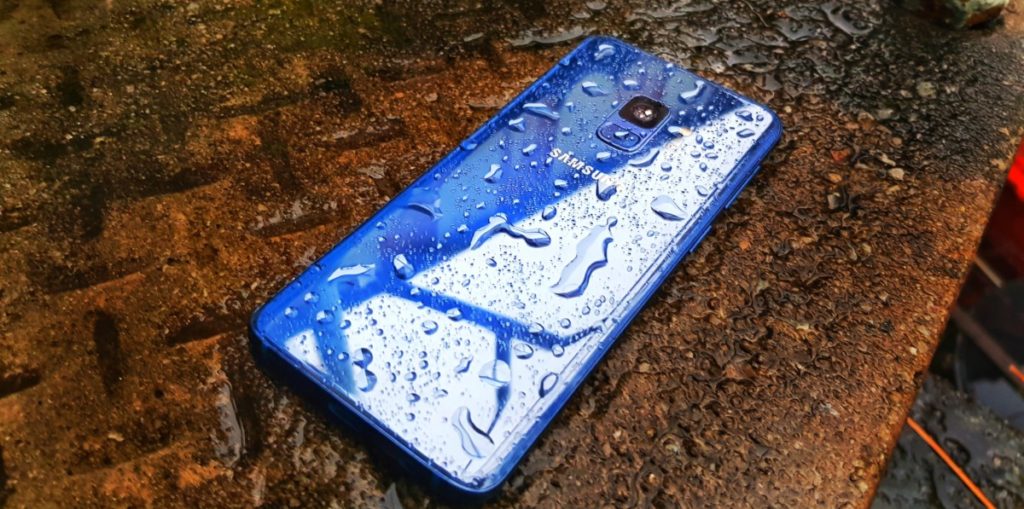
Samsung Galaxy S9 first look
It has been about a week since Samsung officially launched their Galaxy S9, the most powerful phone they have ever made at Mobile World Congress 2018 in Barcelona. We had the pleasure of acquiring a production sample of their Galaxy S9 intended for Malaysia and took it for a quick whirl around the block.
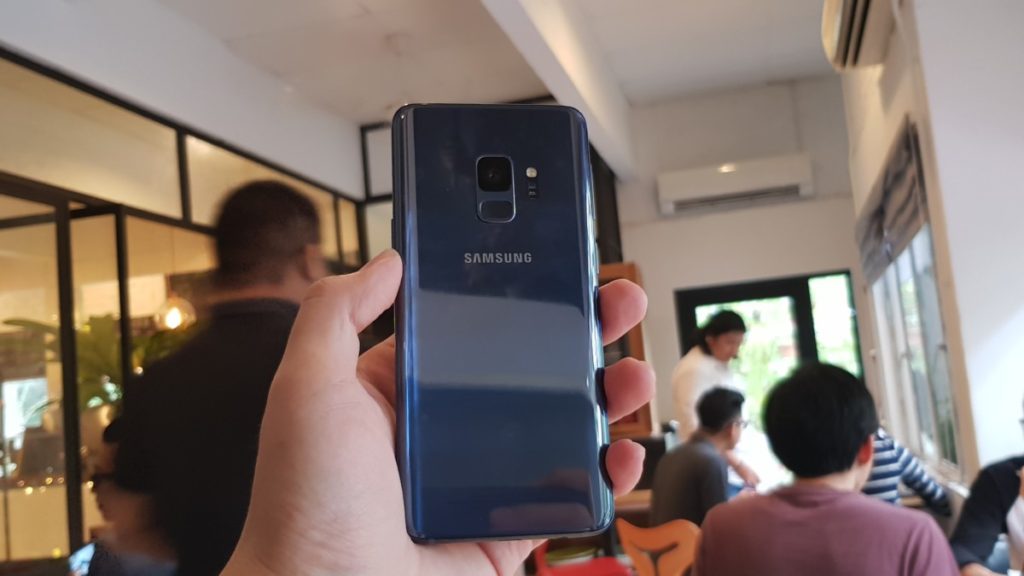
Ahead of more strenuous benchmarking and thorough stress testing, we’ve put the Galaxy S9 through an initial experiential run to see how its more salient features fare through day to day use. Long story short: Is all the hype about the Galaxy S9 all that it is made out to be? To wit, it’s an unequivocal yes.
Samsung hasn’t spared the horses this time in making sure it’s their best phone yet and it shows. Here’s a few things that piqued our interest and fancy in our initial first look for the Galaxy S9.
Slick Galaxy S9 build and design
Table of Contents
The smaller sibling of the Galaxy S9+, the S9 doesn’t depart far from the older Galaxy S8 in terms of its overall design and build with the front dominated by a similarly sized 5.8-inch Quad HD+ curved Super AMOLED display that gently dips down to meet the sides of the phone.
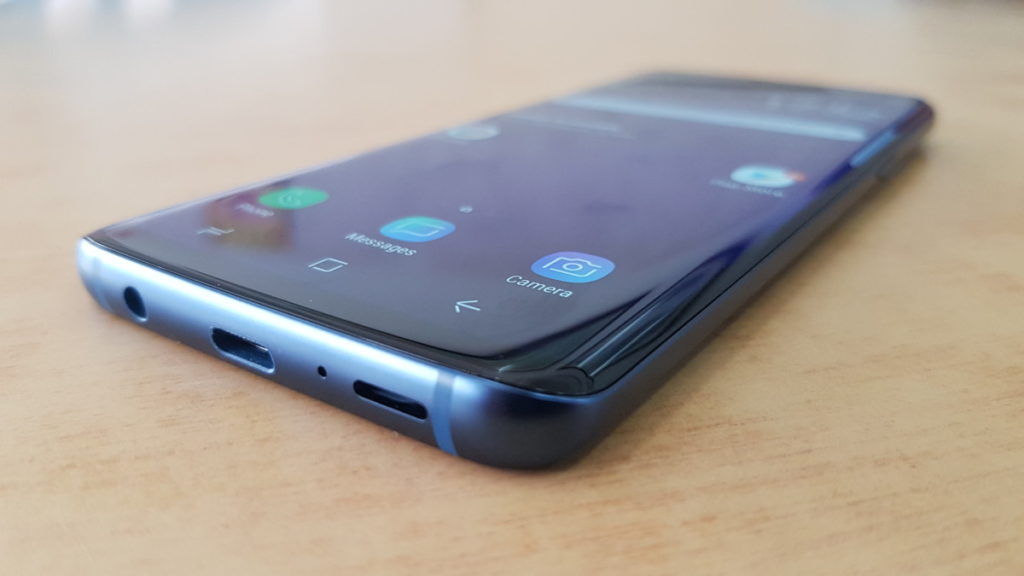
Port and button positions are similar and the S9 retains the dedicated Bixby button on the side just beneath the volume rocker, a power button on the right, a SIM card slot up top and a USB Type-C port at the base. Fortunately, the phone also retains the S8’s IP68 waterproofing, Qi wireless charging and a 3.5mm audio jack too so you can still use wired earbuds; they’ve even bundled in a decent pair of AKG earbuds too with the phone.
When put side by side with an S8, the differences are minute and both are approximately the same size though the S9 is actually slightly thicker by 0.5mm and a wee bit heavier by 10g. Pundits will likely whinge that there it isn’t much of a difference but that’s not a bad thing in this context as the S8 was already a pace setter when it came to smartphone design last year and the S9 expands on that legacy even more. Build quality is top notch and the phone justifies every cent of its price tag with a lustrously smooth finish and impeccable attention to detail in every aspect of its design.
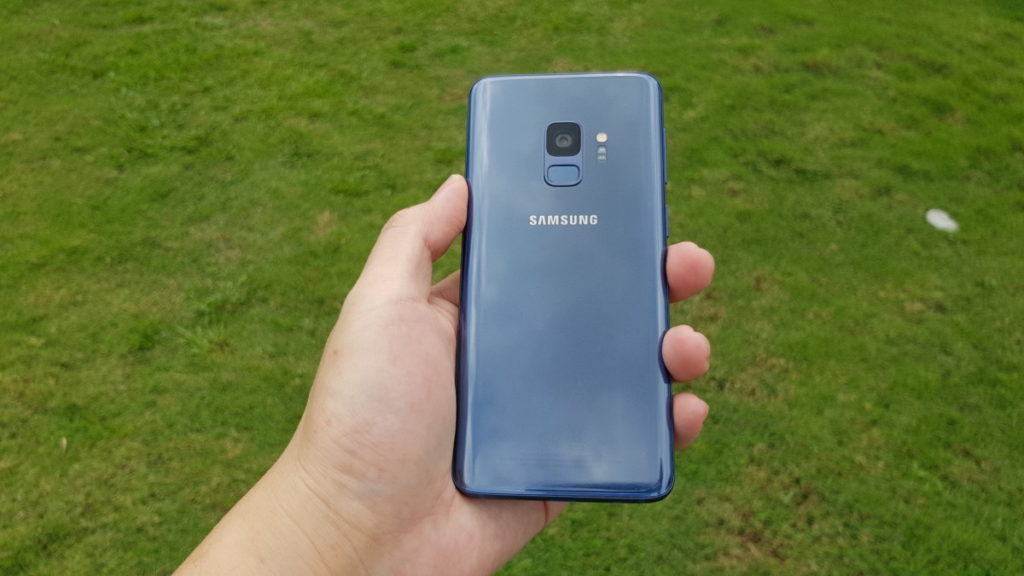
A user upgrading from an S8 will have a smooth learning curve and existing muscle memory will have you adapting to the new S9 in no time bar one important difference – the fingerprint sensor.
Repositioned Galaxy S9 Fingerprint sensor
The Galaxy S9 repositions the fingerprint sensor to just beneath the camera, rather than beside it on the S8. This prevents your finger from inadvertently smudging the lens every time you attempt to unlock the phone. It’s a welcome change and one that could not have come sooner. If that doesn’t float your boat you can still unlock the phone via the front-facing iris sensor or face recognition too.
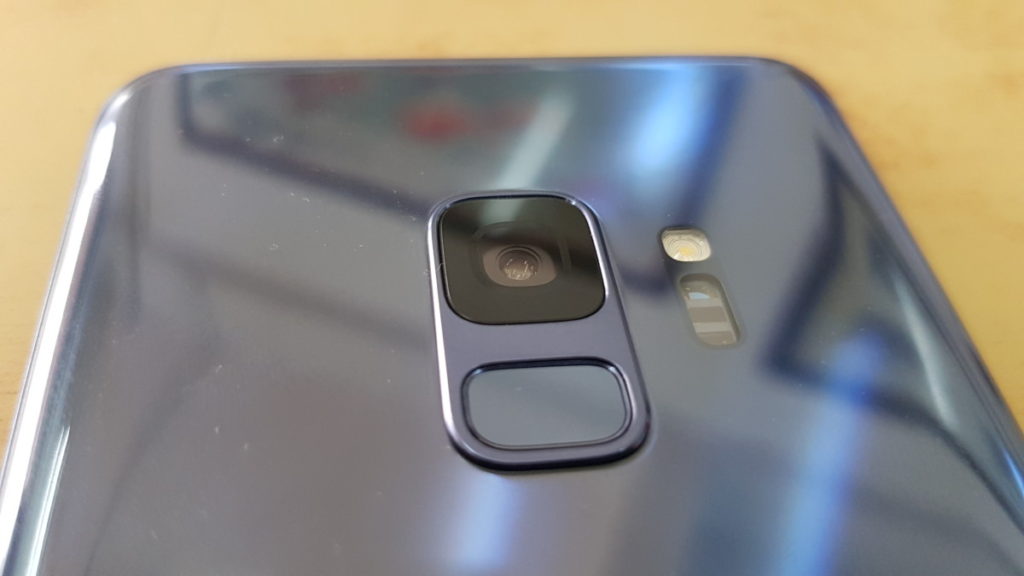
Initial field tests proved that unlocking the phone via the fingerprint reader or the iris sensor was a swift, reliable affair though we’ll need a bit more testing under different scenarios to be sure. There’s way more improvements of course than just the fingerprint reader being repositioned. Most of the enhancements are under the hood though the biggest upgrade is its rear camera.
Dual Aperture Rear Camera
The biggest draw to the Galaxy S9 is its rear camera which has seen significant enhancements. Unlike the fixed f/1.7 aperture on the S8, the S9 incorporates a 12-MP Super Speed Dual Pixel camera that can automatically and mechanically switch between f/1.5 for low light shots and f/2.4 for brighter lit scenes at will though you can also manually select the aperture in Pro mode.

This level of micronisation to include a variable aperture, albeit one that can only default between two settings is nevertheless impressive indeed and the fact that Samsung managed to accomplish this without compromising the slimness of the design or its functionality is a testament to their engineering prowess.
The new camera itself also adds in the ability to capture ultra slow-mo 960fps at 720P video as well as 240fps at 1080P. For the former, the S9 is capable of capturing 0.2 seconds of fast motion video and stretches it out into 6 seconds of slow-mo time.
Since the average chap doesn’t have the reflexes of the Flash, the S9 uses a novel means of triggering slo-mo by getting users to designate an area on the screen to record. Once something fast moves into the area, it triggers slow-mo mode. Auteurs will also appreciate the fact that the phone also comes with the ability to capture 4K video at 60fps though this is capped so far at 5 minutes to avoid maxing out onboard storage to record one clip.
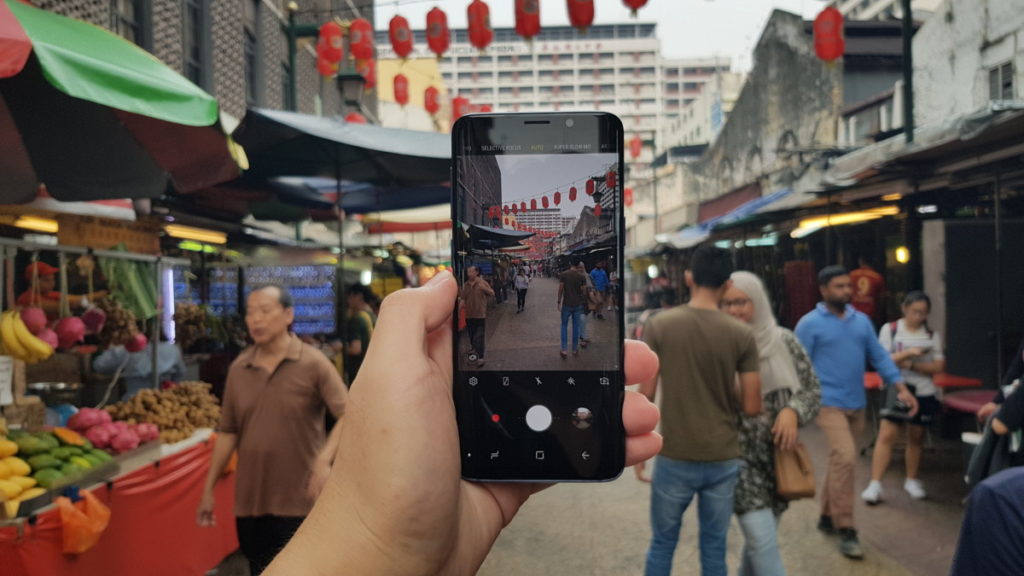
Based on initial field tests, the S9 serves up some seriously good slow-mo video under well lit conditions on top of cracking good shots under most lighting scenarios including dimly lit indoor scenes on account of its automatic aperture that adapts to ambient lighting scenarios.There’s another reason Samsung has crammed in all this imaging hardware though as it’s all part of the main crux of the phone aimed at wooing the social media savvy – AR Emojis.
Novel Galaxy S9 AR Emoji
Taking a page off a certain company from Cupertino’s efforts at creating personalised emoji, Samsung’s AR Emoji scans your face to create a virtual representation of yourself that you can customise somewhat. You can add in glasses, change your hairdo and clothing from a predefined selection and then tweak skin tone too. You can also eschew a virtual representation of yourself and instead just opt to use animated rabbit or other cartoon characters as your virtual avatar. At present, the S9 only tracks your face; any hand gestures are not recorded.

Once you’re done, the phone saves over a dozen AR emoji representations of yourself as animated GIFs that you can use across the usual array of social media platforms from Whatsapp to Facebook. It’s a novel touch and one we’ll explore in more detail later in the full review.

New Dual stereo Speakers
The Galaxy S9 includes a feature that prior incarnations of their flagship series lacked: stereo speakers and does so in a decisive fashion. The S9 has a front facing one up top and a bottom firing one at the base of the phone, both of them tuned by AKG and sporting Dolby Atmos tech for a facsimile of virtual surround sound.
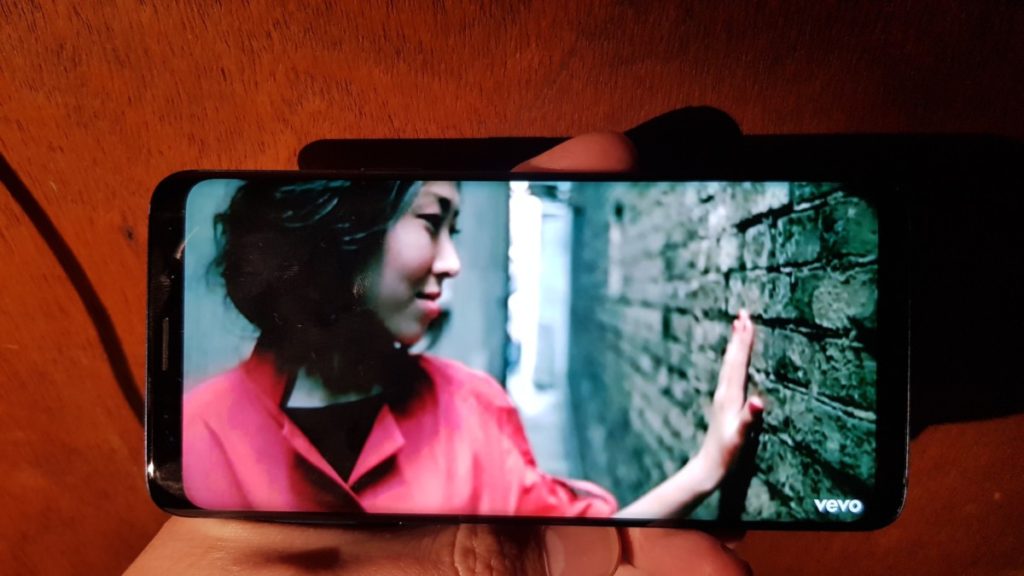
The luscious Super AMOLED display and stereo speakers make for an entertaining experience on the Galaxy S9
A cursory run-through of several SDR movie clips and a mix of lossless and MP3 music tracks with the S9 revealed that it was up to the task, handling everything thrown at with decent detail and even when cranked to maximum volume the speakers tackled it without distortion with enough noise to wake the neighbours. Combined with the slick Super AMOLED display, and the suitable provision of a Netflix account, you have quite a capable portable entertainment device at your beck and call.
So, what now?
As it stands, the Galaxy S9 holds immense promise. With a potent display, a beefy Exynos 9810 processor, powerful stereo speakers and an impressive rear dual aperture camera, it’s easily in the running to be smartphone of the year.
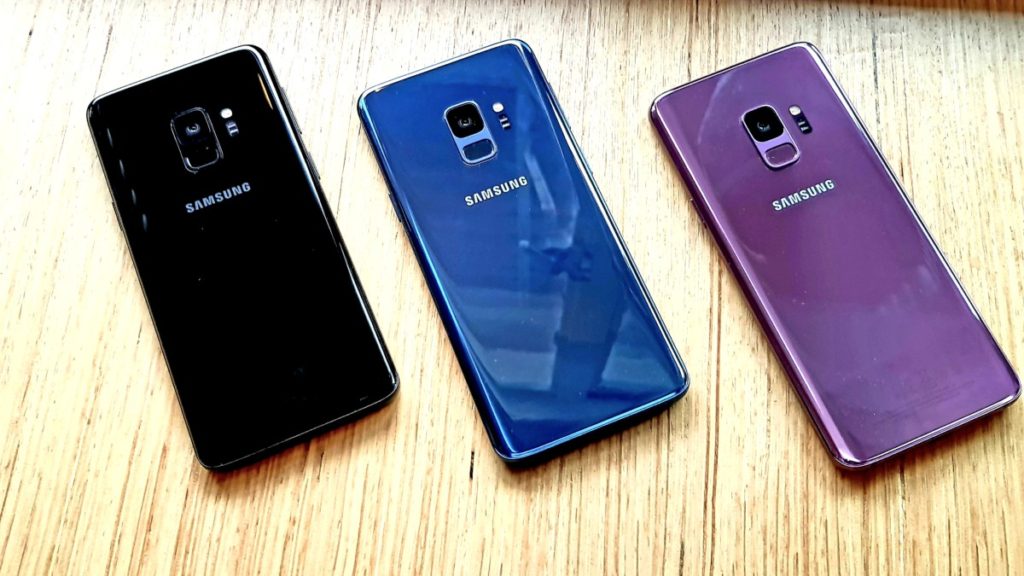
The Galaxy S9 will launch in Malaysia in your choice of three hues – Midnight Black, Coral Blue and Lilac Purple
The phone itself will be officially launched in Malaysia on 16 March with a price tag of RM3,299. Stay tuned for our upcoming review where we render our verdict on Samsung’s latest magnum opus.




